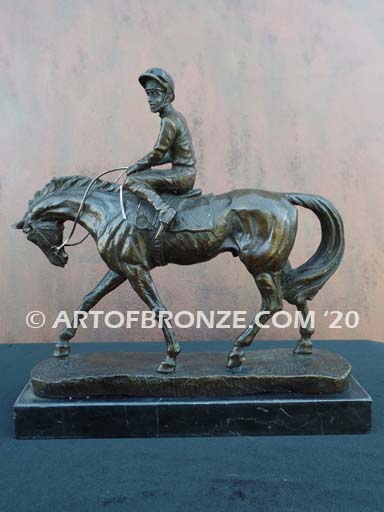
Capturing Movement: The Artistry Behind Bronze Horse Sculptures
Bronze horse sculptures are some of the most iconic and beloved works of art in the world. They capture the beauty, power, and grace of these majestic creatures in a way that is both timeless and inspiring. But what goes into creating a bronze horse sculpture? And how do artists capture the movement and dynamism of these powerful animals?
The Art of Bronze Sculpture
Bronze sculpture is a process that dates back thousands of years. It involves pouring molten bronze into a mold to create a metal replica of the original sculpture. The process is complex and challenging, but it produces some of the most durable and beautiful works of art ever created.
Bronze horse sculptures are particularly challenging to create because of the animal’s size and complexity. Artists must carefully study the anatomy of a horse to capture its movement and form accurately. They must also consider the weight and balance of the sculpture, as well as how it will interact with the surrounding environment.
Capturing Movement in Bronze
One of the most important aspects of bronze horse sculpture is the ability to capture the animal’s movement. Artists use various techniques, such as exaggerating the proportions of the horse’s limbs or twisting the body in a dynamic pose. They may also use negative space to create the illusion of movement.
For example, a sculptor may create a bronze horse sculpture in a rearing position. By exaggerating the length of the horse’s hind legs and tilting its head backwards, the sculptor can create the illusion that the horse is about to bolt forward. The sculptor may also use negative space between the horse’s legs to create the sense that it is suspended mid-air.
Another way artists capture movement in bronze horse sculpture is by using dynamic poses. A horse galloping at full speed or leaping over a fence are both examples of poses that convey a sense of movement and power.
Symbolism and Meaning in Bronze Horse Sculptures
Bronze horse sculptures are more than just beautiful works of art. They can also be imbued with deep symbolism and meaning. For example, a horse rearing up on its hind legs can represent power, strength, and freedom. A horse galloping at full speed can represent speed, agility, and victory.
Bronze horse sculptures can also be used to commemorate historical events or celebrate individuals’ accomplishments. For example, the famous bronze horse statue of Marcus Aurelius in Rome is thought to commemorate the Roman emperor’s victories in the Germanic Wars.
Famous Bronze Horse Sculptures
Some of the most famous bronze horse sculptures in the world include:
● The Quadriga of Saint Mark in Venice, Italy
● The Equestrian Statue of Marcus Aurelius in Rome, Italy
● The Gattamelata in Padua, Italy
● The Equestrian Statue of Theodore Roosevelt in New York City, USA
● The Galloping Horse by Alexander Calder in Chicago, USA
These sculptures are all masterpieces of bronze sculpture and they capture the beauty, power, and grace of horses in a way that is both timeless and inspiring.
The Future of Bronze Horse Sculpture
Bronze horse sculpture is a centuries-old art form, but it continues to evolve and grow today. Artists are constantly finding new and innovative ways to capture the movement and dynamism of these majestic creatures.
For example, some contemporary artists are using bronze to create abstract horse sculptures that break away from traditional forms. Other artists use bronze to create large-scale horse sculptures that are installed in public spaces.
No matter their style or form, bronze horse sculptures continue to amaze and inspire people worldwide. These sculptures are a testament to the beauty and power of horses and the skill and artistry of the sculptors who created them.
By taking the time to appreciate these different elements, you can better understand the artistry behind bronze horse sculptures.


